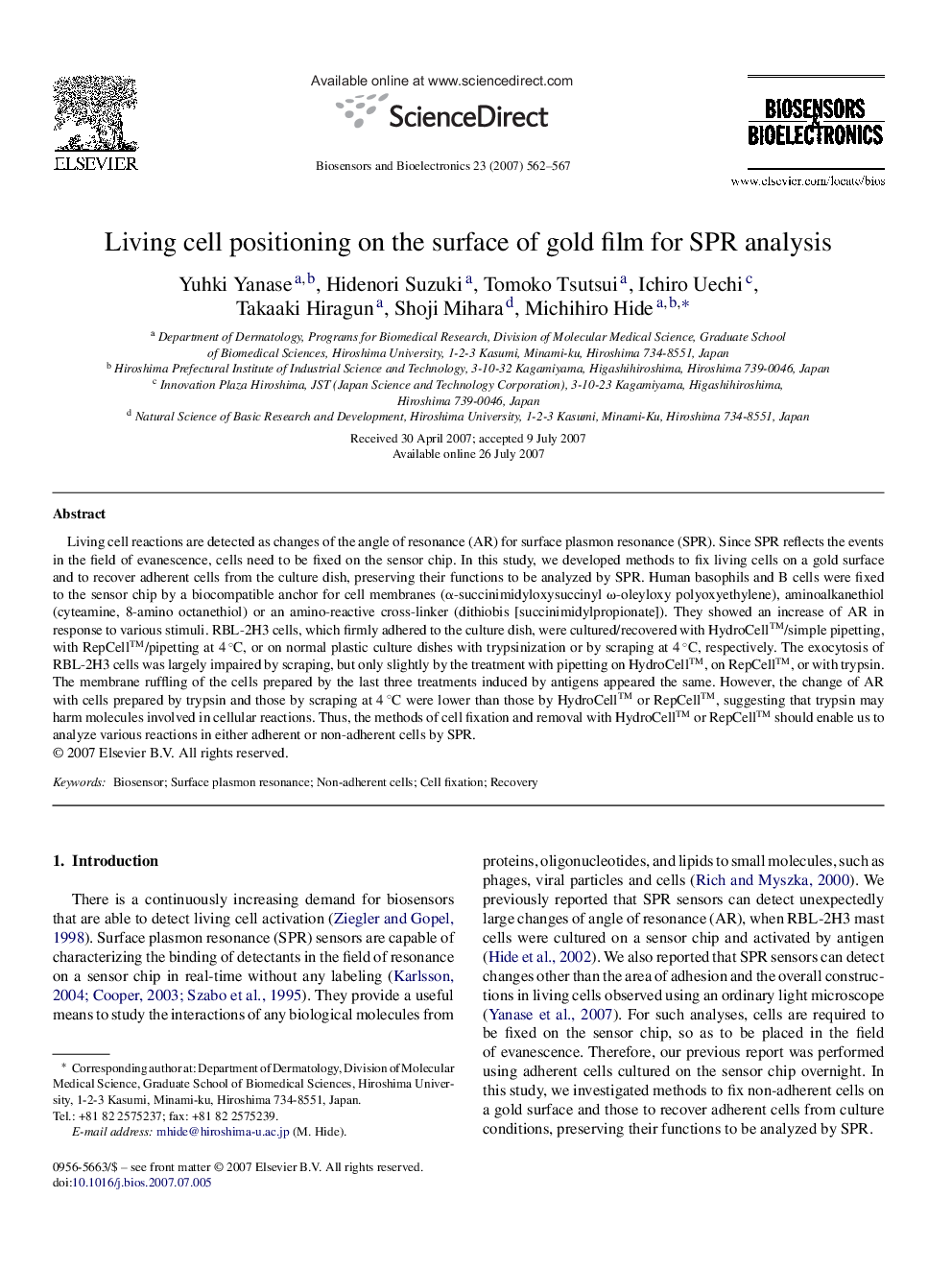| Article ID | Journal | Published Year | Pages | File Type |
|---|---|---|---|---|
| 869823 | Biosensors and Bioelectronics | 2007 | 6 Pages |
Living cell reactions are detected as changes of the angle of resonance (AR) for surface plasmon resonance (SPR). Since SPR reflects the events in the field of evanescence, cells need to be fixed on the sensor chip. In this study, we developed methods to fix living cells on a gold surface and to recover adherent cells from the culture dish, preserving their functions to be analyzed by SPR. Human basophils and B cells were fixed to the sensor chip by a biocompatible anchor for cell membranes (α-succinimidyloxysuccinyl ω-oleyloxy polyoxyethylene), aminoalkanethiol (cyteamine, 8-amino octanethiol) or an amino-reactive cross-linker (dithiobis [succinimidylpropionate]). They showed an increase of AR in response to various stimuli. RBL-2H3 cells, which firmly adhered to the culture dish, were cultured/recovered with HydroCell™/simple pipetting, with RepCell™/pipetting at 4 °C, or on normal plastic culture dishes with trypsinization or by scraping at 4 °C, respectively. The exocytosis of RBL-2H3 cells was largely impaired by scraping, but only slightly by the treatment with pipetting on HydroCell™, on RepCell™, or with trypsin. The membrane ruffling of the cells prepared by the last three treatments induced by antigens appeared the same. However, the change of AR with cells prepared by trypsin and those by scraping at 4 °C were lower than those by HydroCell™ or RepCell™, suggesting that trypsin may harm molecules involved in cellular reactions. Thus, the methods of cell fixation and removal with HydroCell™ or RepCell™ should enable us to analyze various reactions in either adherent or non-adherent cells by SPR.
